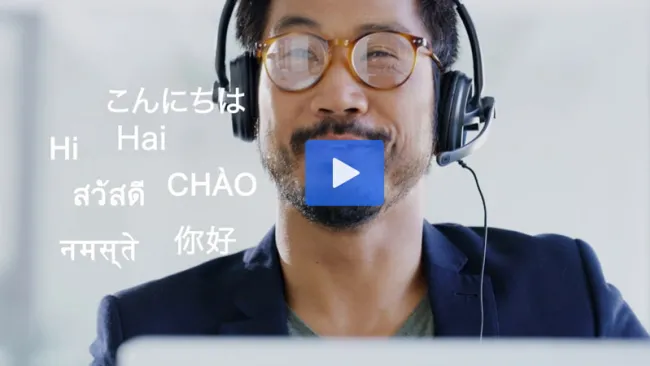Looking to improve customer experience at your organization? One of the first things to do is to understand how customers experience your brand. And customer journey maps are great tools to help gather this level of understanding. A journey map plots all the steps customers take when they try to complete a task or need to resolve an issue. It marks every touchpoint and creates a path, often revealing valuable insight along the way. Multiple journeys can be mapped individually, or can encompass a customer’s entire end-to-end experience.
Most companies use journey maps to find and fix friction within the journey, or to redesign new journeys. But that’s just the tip of the iceberg. Stepping into the customer’s shoes provides a chance for companies to reflect on their entire business.
Forrester Senior Analyst TJ Keitt studies customer experience topics and trends. He recently offered his insights on the state of journey mapping and its future among brands.
Customer Strategist: When undertaking a journey mapping initiative, what do you think are the most important elements to consider?
TJ Keitt: There are three things you want to consider when you’re doing a journey map: First, have a focused customer perspective. There’s a persona that is a focal point of the effort. The second thing you want to consider is that a journey has a definitive beginning and ending. And that beginning and ending are dictated by the third point—a customer objective. The customer objective is articulated in the customer’s terms. “Buy a pair of cleats to wear to my football game” is an example.
Those elements should take you outside of your business process, because your business process is not the customer’s journey. Those aren’t synonymous ideas. And your customer’s journey could begin many days or weeks before they ever interact with your business, and they could conclude many days or weeks after they have left your premises or website. It’s important to have that breadth of understanding about the steps customers take to complete a task to identify any areas in which things that you or your partners do affect the quality of the journey, as well as uncovering any opportunities outside of your current span of control that may be places where you can drive differentiation or at least improve the end-to-end experience for an individual.
CS: Have discussions about journey mapping evolved as omnichannel becomes a priority and new tools and technologies become available?
TK: In short, no. Most of the companies that attend our workshops are at fairly elementary stages of their development of customer journey mapping. It’s a lot of “here are the core concepts.” I haven’t necessarily seen a lot of companies pursuing the journey mapping software to undertake a [more complex] journey mapping exercise. That isn’t to say there aren’t companies that are doing it. The vendors exist and the businesses are viable. But at least in the people that we’re speaking with, it hasn’t reached that point where they’re using them as default tools that are essential to journey mapping efforts.
CS: What are the biggest pain points you see when companies implement journey maps?
TK: A lot of it is things related to stakeholder buy-in to the process and executive sponsorship of the initiatives that would either be the genesis of a journey mapping effort or spring from the output of a journey mapping effort. The willingness of different constituencies within the business to participate in the effort [is another challenge].
On the flipside, if you have a company that has a lot of interest in the activity itself, one of the things that could be problematic is that you have a bunch of different entities that do journey mapping independently without any sense of coordination or consistent understanding of who the customer is. This leads to a potential problem of having too many people with too many different perspectives on what the customer’s end-to-end customer experience should be, leading to different concepts of how the experience should look and feel, and so on.
In a similar vein, if you have people who are excited about the idea of customer journey mapping then it becomes a hammer and they go looking for nails.
CS: Do you think people might be scared of what they might find in the journey mapping process?
TK: There’s the potential. I’m not sure if it’s a matter of not wanting to fix and more a matter of if there’s something they can really do about it. You’re telling me the problem is that I can’t identify when a product is going to ship from the warehouse, but I have no control over the enterprise resource planning (ERP) system so I can’t give you accurate dates, for example. I think that as a consequence of companies being large and requiring silos as in order for managers to effectively control different processes, it is difficult for a lot of businesses to fix the range of problems that may be endemic to their business ecosystems and affect the customer journey.
CS: You’d think getting stakeholder buy-in would be easier, because everyone talks about how important customers are.
TK: Customers are important because they buy stuff. But how you do things to ensure that customers keep buying things varies by company. Journey mapping conceptually may seem like something you would pursue if you were to be focused on understanding how customers interact with your business. But if you’re in a position where you’re saying, “We do agile development and how we understand what goes on with our customers is through a review of how they’re using the product, we make adjustments accordingly or we look at how people interact with emails and we look at escalations from the email to the site to the contact center, etc.,” then you may not view journey mapping as essential to understanding what it is that your customer does because those functions are subsumed by other processes that the business uses to maintain the products they’re delivering.
CS: Are there certain industries where journey mapping is more common than others?
TK: It runs the gamut. Journey mapping is just one of those tools that people view as being core to customer experience. So you assume that if you’re going to be in the business of customer experience you’re going to be journey mapping of some sort.
CS: How do you see the concept of journey mapping evolving?
TK: For most people it’s going to be getting the basics right. Even for organizations that have some experience in journey mapping, there still could be problems of it floating at too high of a level to be useful and either determining how that experience should evolve or other issues that are occurring along the customers’ journey. There could also be issues in how they do things like create personas, how they separate out their business process from the customer’s journey. So I think that’s the upshot of what we see in our CX journey mapping workshops with our clients.
Longer term, you may have a critical mass of companies looking for more innovative ways of employing their journey maps, so you may see more use of technologies or creating more dashboards that weave together business intelligence information with customer journey maps. For those things to be meaningful and useful, there has to be greater uptake of the technologies associated with that and a shift in how they pursue these journey mapping exercises.
CS: How do you distinguish between journey mapping and journey orchestration?
TK: There are two different things. Journey mapping is the process of putting yourself in your customer’s shoes to understand their intentions and processes when interacting with your business. Journey orchestration is how you leverage prescriptive analytics to automate interactions between the business and its customers.
CS: What other initiatives do you recommend for companies to improve CX strategy?
TK: That is highly dependent on the company and what its aims are regarding customer experience. Journey mapping is a fundamental skill because it’s hard to do anything else if you are unable to conceptualize what a customer goes through to interact with your business. If you can do that, you can launch any number of projects or programs to change the business’ culture, organization structure, management practices, product management, and measurement strategies to ensure you’re meeting customer expectations.

















